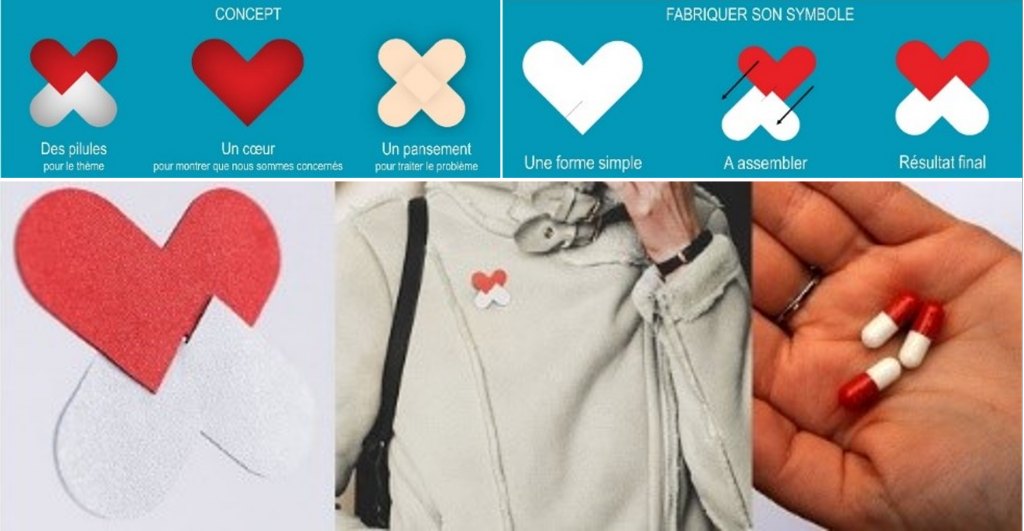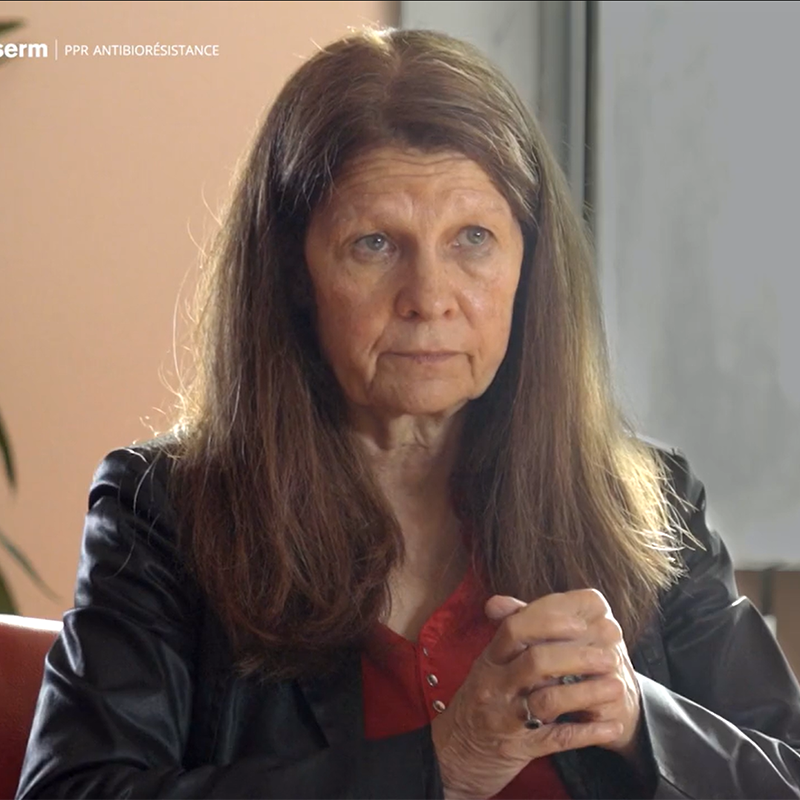Antibiotic resistance (AMR) is now one of the major public health challenges worldwide. Antibiotics, which are essential to modern medicine, are used to treat and prevent many infections, particularly during surgery, transplants and chemotherapy.
However, these valuable molecules are now under threat as more and more bacteria develop resistance and fewer and fewer innovative antibiotics are being brought to market.
Every year, antibiotic resistance is responsible for 1.1 to 1.3 million deaths worldwide, according to figures from 2019 1 and 2021 2, including 33,000 in Europe 3.
Between 2025 and 2050, 39 million people could die as a result of antibiotic-resistant bacterial infections.
In Europe, AMR causes 2.5 million additional hospital days and costs €1.5 billion per year. It also has an impact on agricultural yields, with increased livestock mortality and an estimated economic loss of $13 billion each year.
The phenomenon of AMR is complex and difficult to curb. Bacteria develop resistances that they can pass on to other bacteria. This spread of resistance is amplified in particular by the overuse of antibiotics. Furthermore, bacteria circulate easily from one country to another via tourist and trade flows, and resistance affects humans, animals and the environment alike. AMR therefore has a global dimension.
To address this issue, it is therefore necessary to adopt a holistic approach that tackles the problem in all its dimensions (human/animal/environmental): an approach known as ‘One Health’.
Since 2015 and the publication of a global action plan by the World Health Organisation (WHO) 8, various countries and international organisations have recognised the need to work together to establish roadmaps for reducing the scourge of antibiotic resistance. Furthermore, the need for ‘One Health’ coordination has led four international organisations (WHO, World Organisation for Animal Health (OIE), Food and Agriculture Organisation of the United Nations (FAO) and United Nations Environment Programme (UNEP)) to come together under the name ‘Quadripartite’ to establish joint action plans.
Europe quickly followed suit and, in 2017, the European Commission adopted a ‘One Health’ action plan to make Europe a model of best practice in the fight against AMR 6.
This plan covers the three areas of health (human, animal and environmental) and is structured around seven priorities:
- Proper use of antibiotics,
- Infection prevention,
- Surveillance,
- Awareness raising,
- Research,
- Political commitment
- And international cooperation.
In 2023, Europe went further and set targets to be achieved by 2030 in all Member States and proposed actions to achieve them. Among these targets are:
Une réduction de 20 % de la consommation humaine totale d’antibiotiques et une réduction de 50 % des ventes globales dans l’UE d’antimicrobiens utilisés pour les animaux de ferme et l’aquaculture.
In 2024, the United Nations reinforced this global commitment through a declaration of actions approved by various countries to reduce mortality due to AMR by 10% by 2030.
To translate its commitments into concrete actions and help Member States strengthen their public health policies in the fight against AMR, the European Commission has funded, among other things, two joint European actions to combat AMR and healthcare-associated infections, known as EU-JAMRAI.
The first joint action, EU-JAMRAI 1 (2017-2021), funded to the tune of €4 million, brought together 44 partners (ministries, public health agencies, research institutes, hospitals, etc.) from 26 countries. This project, led by France through Inserm (the French National Institute of Health and Medical Research), aimed to coordinate a unified response to AMR in Europe and to co-develop public health policies and tools to address it. This collaborative programme enabled the various countries involved to exchange information on their practices and resulted in a number of guidance notes aimed at informing European policy-makers of the needs that remained to be met with the implementation of structuring and training tools.
In this regard, EU-JAMRAI 1 has initiated a European programme for monitoring resistance in sick animals, EARS-Vet, modelled on the human health programme, EARS-Net, coordinated by the European Centre for Disease Prevention and Control (ECDC) 9. In addition, EU-JAMRAI 1 has developed a plan to raise public awareness through an online game to educate people about infectious diseases and their prevention, communication campaigns on social media, and the development of a symbol to represent the issue of AMR.

Following this successful first edition, the European Commission launched a second joint action called EU-JAMRAI 2 (2024-2027). Funded to the tune of €50 million and still led by France, via Inserm, this second edition of the project now brings together 128 partners from 30 countries, including the 27 Member States of the European Union, as well as Norway, Iceland and Ukraine. Continuing on from the EU-JAMRAI 1 project, the main areas of work are the proper use of antibiotics, infection prevention, resistance surveillance, improving access to treatment, and awareness-raising – while further integrating the ‘One Health’ approach with activities targeting the three health areas.
The project is therefore implementing cross-cutting activities, such as the development of integrated ‘One Health’ surveillance on a European scale, defining indicators to monitor the evolution of antibiotic resistance in the 3 sectors: human, animal and environmental. The EU-JAMRAI 2 project will also focus on training and capacity building for both professionals and policy makers, with measures to support national efforts. One of the main challenges of the joint action will be to ensure the continued political commitment of the participating countries during and after the project.
To this end, the project will rely on a European network of political decision-makers, including at least one representative per participating country. This network will strengthen cooperation between countries, facilitate the exchange of good practice and identify the specific needs of each country in the fight against AMR, in order to provide appropriate responses.
Through the EU-JAMRAI 2 project, Europe is therefore committing itself to this global dynamic of a coordinated ‘One Health’ approach, in support of national efforts to develop action plans to combat AMR in all countries.
Through its ambitions, the EU-JAMRAI 2 project outlines a future where European countries actively share best practice in the fight against AMR, where healthcare professionals are trained to the highest standards of care, where patients have access to appropriate treatments and where citizens are made aware of the crucial need to preserve the effectiveness of antibiotics.
But will Europe succeed in its ambition to be a model of best practice in the fight against AMR? The answer will be at the end of 2027, when the EU-JAMRAI 2 project comes to an end.
Références :
1 Murray et al., Global burden of bacterial antimicrobial resistance in 2019: a systematic analysis. The Lancet, Volume 399, Issue 10325, 629 – 655
2 Naghavi et al., Global burden of bacterial antimicrobial resistance 1990–2021: a systematic analysis with forecasts to 2050. The Lancet, Volume 404, Issue 10459, 1199 – 1226
3 Cassini et al., Attributable deaths and disability-adjusted life-years caused by infections with antibiotic-resistant bacteria in the EU and the European Economic Area in 2015: a population-level modelling analysis. Lancet Infect Dis. 2019 Jan;19(1):56-66.
4 ECDC, The bacterial challenge: time to react – A call to narrow the gap between multidrug-resistant bacteria in the EU and the development of new antibacterial agents. 2009
5 UNEP, Bracing for Superbugs: Strengthening environmental action in the One Health response to antimicrobial resistance. 2023. https://www.unep.org/resources/superbugs/environmental-action
6 A European One Health Action Plan against Antimicrobial Resistance (AMR). 2017. https://health.ec.europa.eu/document/download/353f40d1-f114-4c41-9755-c7e3f1da5378_fr?filename=amr_2017_action-plan.pdf
7 Council Recommendation on stepping up EU actions to combat antimicrobial resistance in a One Health approach. 2023. https://health.ec.europa.eu/publications/council-recommendation-stepping-eu-actions-combat-antimicrobial-resistance-one-health-approach_en?prefLang=fr
8 Global action plan on antimicrobial resistance. 2015. https://www.who.int/publications/i/item/9789241509763
9 Réseau de surveillance europen EARS-Net, https://www.ecdc.europa.eu/en/about-us/networks/disease-networks-and-laboratory-networks/ears-net-data
Authors

Yohann Lacotte
Project Manager PROMISE

Evelyne Jouvin-Marche
Scientific coordinator PPR Antibioresistance

Marie-Cécile Ploy
Professor of microbiology
1 : Université de Limoges, Inserm, CHU Limoges, RESINFIT, U 1092, 87000 Limoges, France
2 : Inserm, Institut thématique Physiopathologie, Métabolisme, Nutrition (PMN), 75013 Paris, France